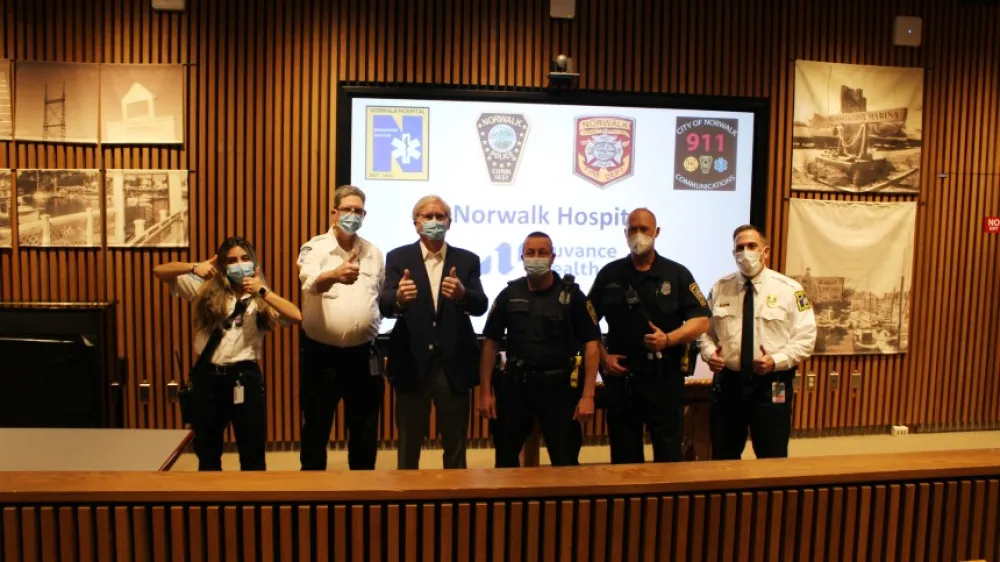Providing your location allows us to show you nearby locations and doctors.
Patient with sudden cardiac arrest saved by Norwalk's emergency response agencies

12/02/2021
On Oct. 7 around 9 a.m., John Taney showed up for his weekly match with friends in the Harbor View neighborhood of Norwalk. It was mere moments on the court before Taney, 78, suffered a sudden cardiac arrest, a condition in which there is an abrupt loss of heart function, breathing and consciousness. This usually results from an electrical disturbance in the heart and is not the same as a heart attack, where blood flow to a part of the heart is blocked.
If not treated immediately, sudden cardiac arrest will lead to death. But thanks to his friends and multiple emergency response agencies in Norwalk, Taney was recently able to show his gratitude to all the people involved in saving his life.
“There aren’t words to adequately thank everyone,” Taney said. “It’s just incredible all the teams that came together to save this sorry old Irishman.”
Taney recently spoke before members of the Norwalk Fire Department, Norwalk Police Department, Norwalk Hospital Emergency Medical Services (EMS) and Norwalk’s 911 dispatch at a celebratory gathering at Norwalk Hospital.
“I had the great pleasure of meeting Mr. Taney after he recovered. He was very kind to suggest that he wanted to thank everyone involved in his rescue,” Norwalk Hospital EMS Director Aaron Katz said. “Believe it or not, this is a rare event to have someone suffer this type of medical event and come out the other side. This case is an example of how rapid recognition, 911 activation, bystander cardiopulmonary resuscitation (CPR) and a high-performance, multi-tiered EMS system can save lives in cases of sudden cardiac arrest.”
When the 911 call came through, his friends received CPR instructions over the phone. Norwalk Fire, Police and EMS responded to the scene. Police Officer David Peterson was the first to arrive and applied an Automated External Defibrillator (AED) on Taney.
Norwalk Hospital EMS paramedics and EMTs continued resuscitation on the scene. After multiple defibrillations, CPR and medication, Taney’s circulation returned. His heart was not beating on its own for about 25 minutes.
After receiving care in the Norwalk Hospital Emergency Department and Intensive Care Unit, Taney was discharged home one week after his cardiac event on Oct. 14.
“You are all heroes. I can’t express my appreciation enough,” Taney said. “In our home, as we go into the holidays, instead of tears there will be joy.”
This story is one patient’s experience, recounted here for educational and general informational purposes only.